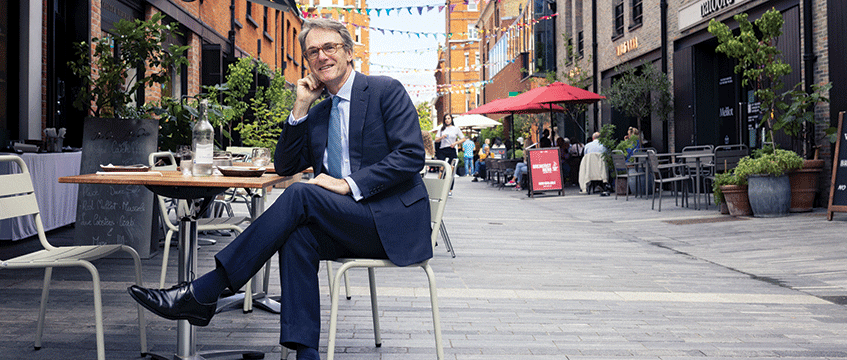The fight to revive our failing town centres in the face of increasing pressure from increasing business rates and the challenge of online retail makes the power of collaboration more crucial than ever. The role of business improvement districts and other vehicles that can enable local businesses and property owners to partner with local authorities and other stakeholders to improve their local area is very much under the spotlight, writes Susan Freeman, partner at Mishcon de Reya.
A key obstacle is fragmented property ownership. The Crown Estate was able to reinvigorate Regent Street in London’s West End with a carefully curated strategy and the Howard de Walden Estate’s reinvention of Marylebone High Street 20 years ago has served as an exemplar for other high street initiatives. But multiple ownership means this simply isn’t an option for most high streets without the intervention of a BID or visionary local leadership.
At Mishcon de Reya, we have worked closely with Bee Midtown, our local BID, since its inception and I chair its property group. Representing 400 businesses in the broader Holborn area, we work collaboratively with the local authority and stakeholders such as Transport for London to promote the area and combat local concerns such as traffic congestion and public transport issues.
The UK has a history of commissioning (and ignoring) a plethora of reports on the future of the high street. In 2011, retail guru Mary Portas identified the problem of supermarkets, out-of-town shopping, internet and poor communication between councils, retailers and landlords, concluding that “we have sacrificed communities for convenience”.
A 2013 review, by former Iceland chief executive Bill Grimsey, went largely ignored. However, led by its enterprising mayor, the Belgian city of Roeselare implemented some of the ideas – free parking, fining landlords for leaving shops vacant and low business rates – and has seen 30 new shops open in three years. The changes were facilitated by collaboration between the local council and retailers.
Perhaps this success, albeit outside the UK, encouraged Bill Grimsey to publish a recent second report, The Vanishing High Street. A theme is to reduce reliance on retail, “refashioning” it as public community spaces.
Overcoming short-termism
In 2016, a British Property Federation report promoted a “radical new model to revitalise Britain’s high streets”. It proposed overcoming the short-termism of fragmented ownership by town centre investment management – a vehicle for pooling assets and enabling change through proactive asset management, curation of occupier mix and better marketing.
The Portas Review recommended the creation of “Super BIDs” with enhanced responsibilities and powers. But, as Mark Robinson of community shopping centre owner Ellandi, says: “Overall, BIDs have had a positive impact in the communities where we invest. However, occasionally they fall short of their aspirations, often through a lack of clear leadership.” As identified at our recent Conservative Party conference dinner, chaired by EG editor Damian Wild, the way forward is through ‘can-do’ local leadership.
The future of our town centres is no longer just about retail. Leisure, housing and local business will be increasingly important. The recent announcement by the prime minister that council borrowing limits are to be scrapped to allow local authorities to build their own homes could be welcome news. Centrally located homes for younger people and for older people wanting to be a short distance from local shops and amenities could bring increased vitality.
Understanding the customer
New West End Company, one of the few UK property owner BIDs, represents 600 retail, hotel, restaurant and property owners. Its chief executive Jace Tyrrell says that understanding its customer is fundamental to its success. It is poised to launch an exciting world city first insights programme with PwC to monitor and analyse visitor movement and spend to help fully understand their customers.
LSE professor Tony Travers says: “City and town centres won’t die, though they will have to change. Good management by cooperative owners, working alongside BIDs can ensure change is managed better than if market forces alone were at work. But this will mean BIDs taking more of a role in planning and being the place where market signals are analysed and explained.
“We need to ensure that local planning keeps pace with public expectations, while protecting concentrations of activities. There will probably need to be more and better-funded BIDS to ensure this can happen.”
We need to continue to work collaboratively to attract visitors to our high streets.
In the words of Jan Gehl, whose influence is apparent in many world cities: “A good city is like a good party – people stay longer than really necessary.”











